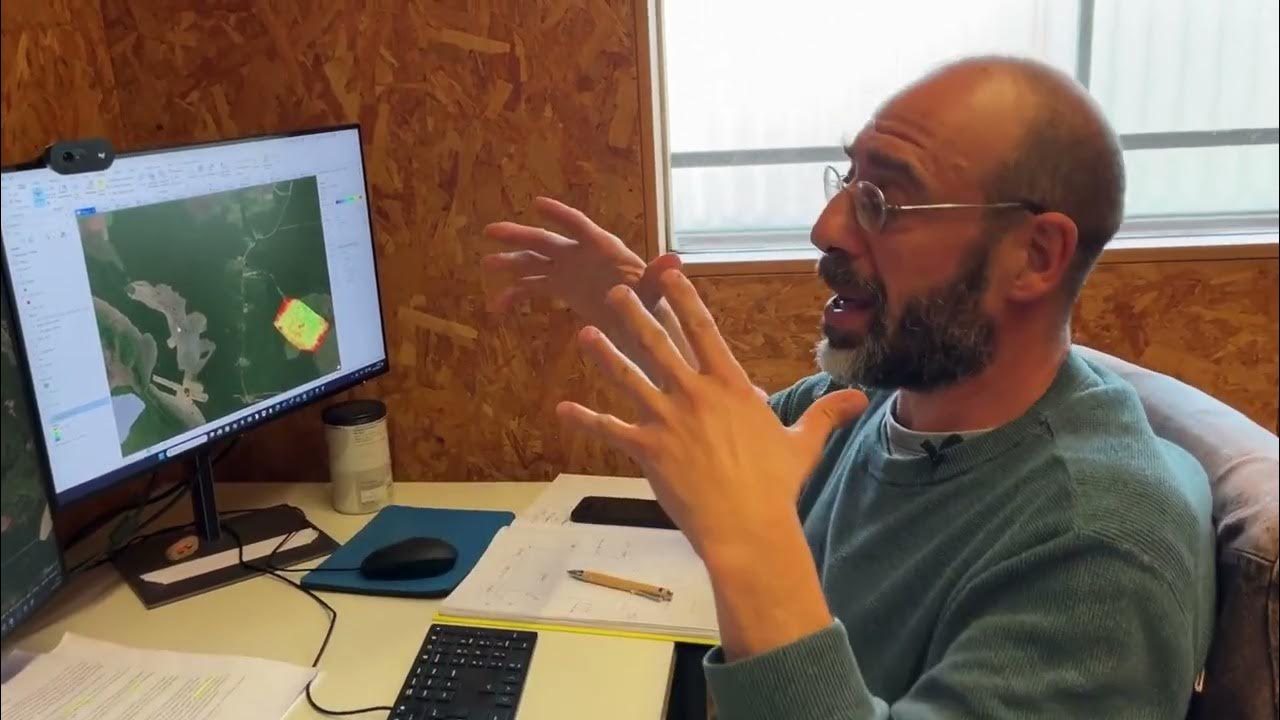Agroecosistemas
Summary
TLDRThis video explores agroecosystems by discussing the diversity of organisms within agricultural fields, particularly maize cultivation. It highlights the interconnectedness of various species from different biological kingdoms and explains the ecological roles of producers, consumers, and decomposers. The video also covers the impacts of agrochemicals, such as pesticides and fertilizers, on ecosystems and environmental health. Furthermore, it introduces agroecology as a sustainable alternative, promoting biodiversity, ecological balance, and reduced chemical use. The importance of consumer choices in shaping environmentally-friendly food systems is also emphasized.
Takeaways
- 😀 Agroecosystems are complex and host a wide range of organisms, not just the cultivated crop, including bacteria, fungi, protozoa, animals, and weeds.
- 😀 Agroecosystems follow the ecological concept of energy flow and material cycling, with producers like maize being the base of the energy flow.
- 😀 Agrochemicals, such as pesticides, herbicides, and fertilizers, are used to manipulate energy flow and biomass, but their misuse can lead to negative environmental impacts.
- 😀 Improper use of agrochemicals has been linked to contamination of rainwater with herbicides and a decline in biodiversity, including plant species, beetles, and birds.
- 😀 Energy flow in agroecosystems follows a chain, with carbon atoms moving through producers, herbivores, higher consumers, and decomposers.
- 😀 Human agricultural activities contribute to the global carbon cycle by releasing CO2 into the atmosphere, a major factor in global warming.
- 😀 Agroecology promotes practices like crop rotation and biodiversity to restore ecological relationships, reduce pesticide use, and enhance soil fertility.
- 😀 Agroecological systems, over time, can match or even surpass conventional systems in productivity while being more sustainable and environmentally friendly.
- 😀 Consumer choices, such as opting for plant-based foods or sustainably produced products, can significantly reduce the environmental impact of agriculture.
- 😀 The production of red meat generates significantly more greenhouse gas emissions than fruits, vegetables, and other less resource-intensive food products.
Q & A
What is the main topic of the transcript?
-The transcript focuses on agroecosystems, exploring their biological and ecological properties, the role of organisms in agricultural systems, and the impact of agrochemicals on the environment.
What is the significance of maize in the context of the agroecosystem?
-Maize is used as an example of a cultivated crop, demonstrating how various organisms, including plants, animals, and microorganisms, coexist in an agroecosystem and interact within the production system.
What types of organisms are found in an agroecosystem like a maize field?
-An agroecosystem such as a maize field contains a variety of organisms from different kingdoms, including bacteria, fungi, protozoa, worms, insects, amphibians, and birds.
What role do weeds play in agroecosystems?
-Weeds are plants that grow in agroecosystems but are not part of the intended crop. They are categorized as unwanted species that compete with the cultivated crops, though they are still part of the plant diversity in the system.
What is the concept of 'ecosystem' in relation to agroecosystems?
-An agroecosystem is a human-modified ecosystem designed for agricultural production, and it shares some properties with natural ecosystems, including energy flow and material cycles, but is influenced by human activity and management.
How do agrochemicals affect agroecosystems?
-Agrochemicals like pesticides, herbicides, and fertilizers alter the natural dynamics of agroecosystems by targeting specific organisms. They aim to boost crop yield but can also harm other species, decrease biodiversity, and affect the flow of energy and nutrients.
What are the environmental consequences of improper agrochemical application?
-Improper use of agrochemicals can lead to contamination of water sources, harm to non-target species, and the disruption of local biodiversity, as seen with the spread of glyphosate and its breakdown product, AMPA, found in rainwater.
What does the diagram of the energy flow in an agroecosystem show?
-The energy flow diagram in an agroecosystem demonstrates how energy is transferred between different trophic levels. Producers (like maize) form the base, and as energy moves up through consumers, it decreases in both amount and efficiency.
What is the role of agroecosystems in global carbon cycles?
-Agroecosystems play a significant role in the global carbon cycle. Human activities such as the use of fossil fuels in agriculture and deforestation contribute to the increased concentration of carbon dioxide in the atmosphere, which affects global temperatures.
How can agroecology contribute to more sustainable agricultural practices?
-Agroecology promotes biodiversity, ecological balance, and the reduction of agrochemicals. It encourages practices like crop rotation, integrated pest management, and sustainable land use, leading to healthier agroecosystems and lower environmental impact.
Outlines

This section is available to paid users only. Please upgrade to access this part.
Upgrade NowMindmap

This section is available to paid users only. Please upgrade to access this part.
Upgrade NowKeywords

This section is available to paid users only. Please upgrade to access this part.
Upgrade NowHighlights

This section is available to paid users only. Please upgrade to access this part.
Upgrade NowTranscripts

This section is available to paid users only. Please upgrade to access this part.
Upgrade NowBrowse More Related Video

Maize: The Engine of American Civilization

Agroecosystem 1

Ancient Amazon Engineering: Umberto Lombardo discovers a Pre-Columbian Green Revolution

Five Types of Subsistence Agriculture [AP Human Geography: Unit 5 Topics 1 & 10]

Native American Societies BEFORE 1492 [APUSH Unit 1 Topic 2] 1.2

Series 21 - Soil Ecology I - Introduction
5.0 / 5 (0 votes)